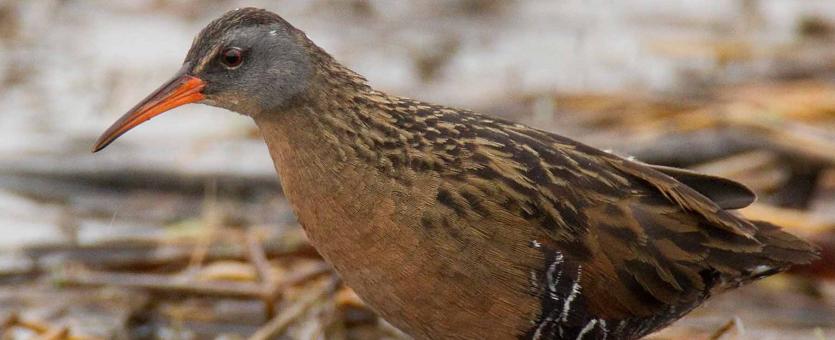
Rails are compact, with short, rounded wings and short tails. Adult Virginia rails have a blackish back with rusty wing patches, gray face, and reddish bill and legs. The long bill is slightly curved. Underparts are cinnamon, with the flanks heavily barred with black and white. The song is a series of one- and two-syllable notes: kik, kik, kik, kidik, kidik, kidik. They are often heard but seldom seen unless you are very patient.
Similar species: The king rail looks similar but is much larger, 15 inches in length, and the adult has reddish edges on its dark back feathers; the head is gray with cinnamon-red cheeks and breast; the belly and sides are heavily barred with black and white.
Length: 9½ inches (tip of bill to tip of tail).
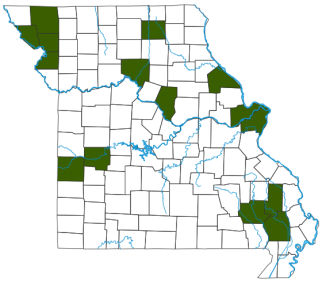
Statewide. Missouri is located at the southern periphery of the Virginia rail’s range.
Habitat and Conservation
Rails are shy, secretive swamp- and marsh-dwelling birds. Their strong legs and long toes help them walk on floating vegetation in shallow water. Their bodies are compressed laterally, allowing them to slip easily among the thick, dense marsh vegetation such as the cattails, sedges, and grasses commonly found in rail habitat.
Food
Forages for snails, earthworms, and insects by poking its bill into the mud of marshes and swamps.
Status
Uncommon migrant. Very rare and local summer resident with no regular nesting sites known in Missouri. A species of conservation concern in Missouri, but populations are secure globally.
The Virginia rail is also a migratory gamebird that may be hunted in our state; adhere to current laws as outlined in the Wildlife Code of Missouri.
The closely related king rail is also a Missouri species of conservation concern as well as a migratory gamebird.
Life Cycle
Virginia rails breed in northern and western portions of the United States and in the southern prairie provinces of Canada. Their loosely woven nests are positioned in thick emergent aquatic vegetation, over shallow water. The young are able to leave the nest within 24 hours of hatching. This species migrates south to Mexico, southern California, Arizona, Florida, and along the coastline of the Gulf of Mexico. Virginia rails travel through Missouri in spring and fall.
Human Connections
Worldwide, rails are hunted for food. Not many Americans hunt “webless migratory gamebirds.” Those who shoot snipes, coots, rails, and other “gooney birds” do so mainly for sport, or to enliven a fruitless day of duck hunting. Rails rarely flush. They fly relatively slowly and in a straight line.
Ecosystem Connections
Though rarely seen, rails are an important part of the wetland ecosystems of their breeding and overwintering territories, plus the areas they migrate through. As predators they control populations of the invertebrates they eat. As prey, they feed a variety of predatory animals.
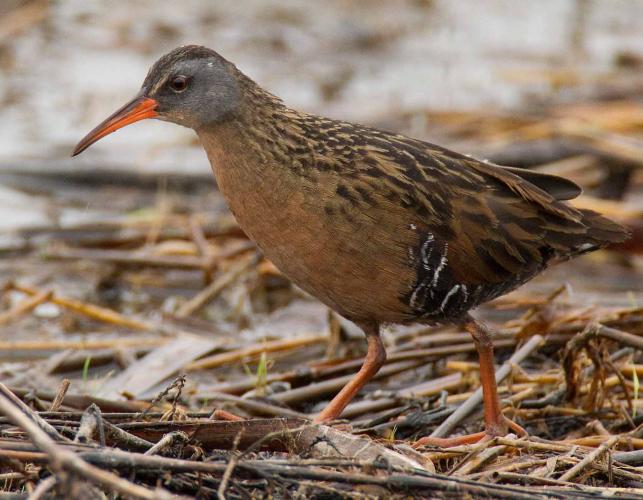
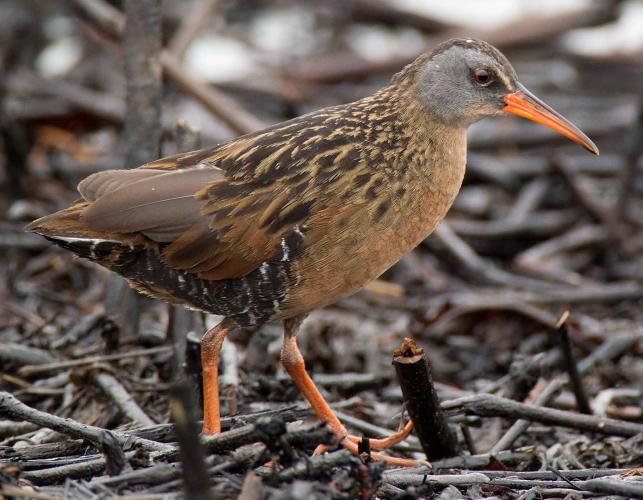
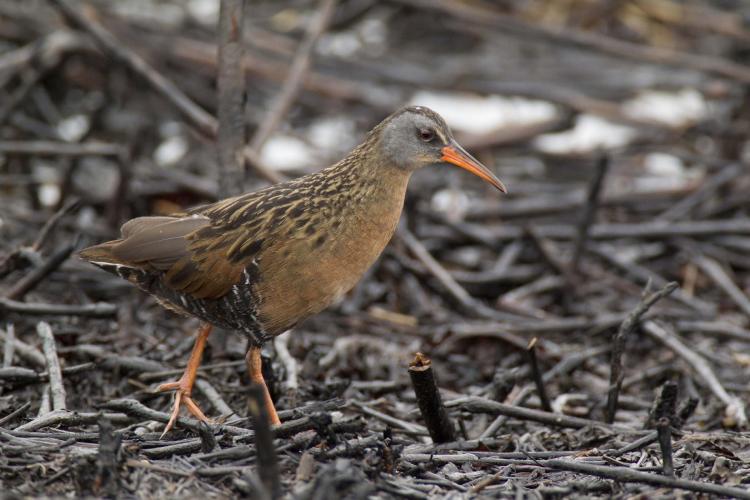
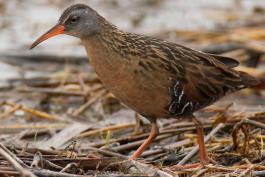
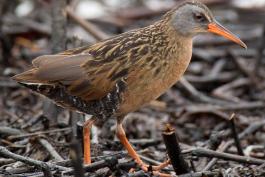
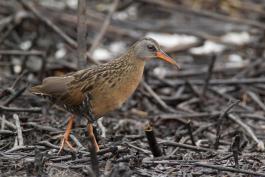
Where to See Species
About 350 species of birds are likely to be seen in Missouri, though nearly 400 have been recorded within our borders. Most people know a bird when they see one — it has feathers, wings, and a bill. Birds are warm-blooded, and most species can fly. Many migrate hundreds or thousands of miles. Birds lay hard-shelled eggs (often in a nest), and the parents care for the young. Many communicate with songs and calls.






















